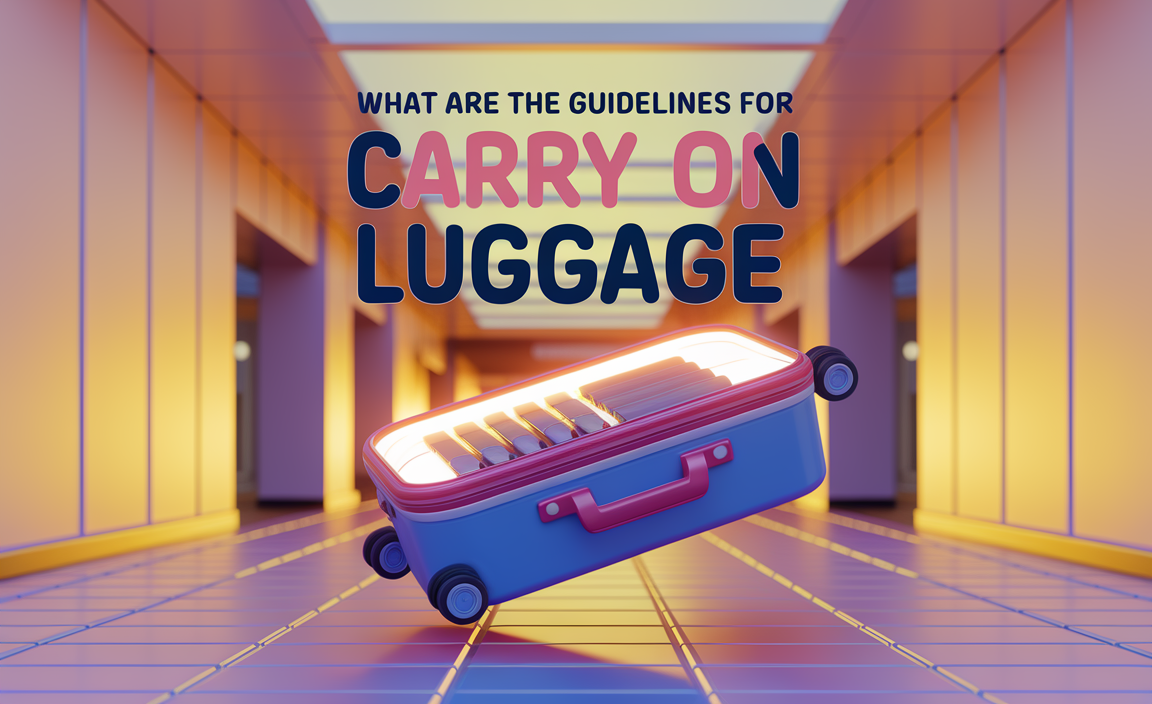This Agra 4-day itinerary is your essential guide to experiencing the magic of the Taj Mahal and more. We’ve crafted a simple, stress-free plan for beginners, covering must-see sights, local tips, and practical advice for a comfortable and memorable trip. Get ready to explore Agra with confidence!
Planning a trip to Agra, especially for the first time, can feel a bit overwhelming. Where do you begin? What are the absolute must-sees? How can you fit it all in without feeling rushed? Many travelers worry about missing out on key experiences or getting lost in the details.
But don’t worry, we’re here to make it easy! This guide is designed to give you a clear, step-by-step plan for a fantastic 4-day adventure in Agra. We’ll cover everything you need to know, from iconic landmarks to hidden gems, ensuring your journey is smooth and enjoyable. Get ready for an unforgettable experience!
Agra in 4 Days: A Beginner-Friendly Itinerary
Welcome to Agra, a city steeped in history, romance, and architectural marvels! Agra was once the capital of the Mughal Empire, and its rich past is evident in its stunning monuments. A 4-day trip allows you to truly immerse yourself in its grandeur without feeling like you’re constantly on the go. This itinerary is crafted for beginners, focusing on essential sites, offering practical tips, and ensuring a comfortable experience.
Day 1: Arrival and the Majestic Taj Mahal
Your Agra adventure begins with its crown jewel. It’s best to visit the Taj Mahal early to avoid crowds and experience its serene beauty in the soft morning light.
Upon arrival in Agra, check into your hotel and take some time to settle in. After a brief rest, head straight to the Taj Mahal. It’s advisable to purchase your tickets online in advance to save time.
Morning (Sunrise Visit):
- Taj Mahal: Arrive before sunrise. Witnessing the Taj Mahal bathed in the golden hues of dawn is an unforgettable experience. Explore the mausoleum, the gardens, and the surrounding complex. Take your time to absorb the intricate details and the poignant love story behind its creation.
Afternoon:
- Lunch: Enjoy a traditional North Indian lunch at a local restaurant near the Taj Mahal.
- Agra Fort: After lunch, visit the magnificent Agra Fort, a UNESCO World Heritage Site. This sprawling red sandstone fortress was the main residence of the Mughal emperors. Explore its palaces, audience halls, and prisons.
Evening:
- Mehtab Bagh (Sunset View): Before sunset, head to Mehtab Bagh across the Yamuna River. This Mughal garden offers a breathtaking symmetrical view of the Taj Mahal, especially during sunset. It’s a less crowded spot for photography.
- Dinner: Have dinner at a restaurant offering local Mughlai cuisine.
Traveling Tip: For visiting the Taj Mahal, dress modestly out of respect for the site. Comfortable walking shoes are a must, as you’ll be doing a lot of walking. Also, remember that photography is not allowed inside the main mausoleum.
Day 2: Mughal Grandeur and Local Crafts
Today, delve deeper into Agra’s rich history with visits to other significant Mughal-era structures and explore some local arts and crafts.
Start your day with a visit to Akbar’s Tomb, a beautiful precursor to the Taj Mahal in terms of architectural grandeur.
Morning:
- Itmad-ud-Daulah’s Tomb (Baby Taj): Begin your day with a visit to the exquisite Itmad-ud-Daulah’s Tomb. Often called the ‘Baby Taj’, this tomb is considered a draft of the Taj Mahal itself, featuring intricate pietra dura inlay work.
- Akbar’s Tomb, Sikandra: Next, travel a short distance to Sikandra to explore the Tomb of Emperor Akbar. This impressive tomb showcases a blend of Islamic, Hindu, Rajput, and Central Asian architectural styles.
Afternoon:
- Lunch: Sample some local street food or enjoy a meal at a casual eatery.
- Shopping for Handicrafts: Agra is famous for its handicrafts. Explore markets like Sadar Bazaar or Kinari Bazaar for marble inlay artifacts, leather goods, and Zardozi embroidery. Bargaining is common, so be prepared to negotiate prices.
Evening:
- Kalakriti Cultural & Convention Center: Consider attending the ‘Mohabbat-e-Taj’ show, a theatrical portrayal of the story of the Taj Mahal. It provides a different perspective on the monument’s history and creation.
- Dinner: Enjoy your dinner at one of Agra’s popular dining spots, perhaps trying some local sweets like ‘Petha’.
Comfort Tip: If you are traveling with children or have personal care needs, ensure you have appropriate travel-friendly options like disposable diapers, which can offer discreet protection and comfort during long days of sightseeing. Pack them in an easily accessible bag or a dedicated travel pouch.
Day 3: Fatehpur Sikri Excursion
Today, you’ll take a day trip to Fatehpur Sikri, a fascinating abandoned city that was once the Mughal capital.
Fatehpur Sikri is about an hour’s drive from Agra, making it a perfect day trip. This ghost city is a UNESCO World Heritage Site and offers a glimpse into Mughal urban planning and architecture.
Morning:
- Travel to Fatehpur Sikri: Hire a taxi or join a guided tour for your trip to Fatehpur Sikri. The journey itself is scenic, passing through rural landscapes.
- Explore Fatehpur Sikri: Upon arrival, explore the remarkably well-preserved complex. Key attractions include:
- Buland Darwaza: The imposing victory gate, one of the tallest in the world.
- Jama Masjid: A beautiful mosque.
- Diwan-i-Aam (Hall of Public Audience): Where the emperor met common people.
- Diwan-i-Khas (Hall of Private Audience): Known for its innovative central pillar.
- Jodha Bai’s Palace: A stunning palace showcasing a blend of architectural styles.
- Panch Mahal: A five-storied pavilion.
Afternoon:
- Lunch: Have lunch at a restaurant in Fatehpur Sikri or carry packed refreshments.
- Psychic Temple (Optional): If time permits and you’re interested, you can visit the nearby shrine of Sheikh Salim Chishti, a Sufi saint, located within the Fatehpur Sikri complex.
Evening:
- Return to Agra: Drive back to Agra by late afternoon.
- Relax and Dinner: Spend your evening relaxing at your hotel or exploring a local market for any last-minute souvenirs. Enjoy a farewell dinner, perhaps revisiting a favorite dish or trying something new.
Traveler’s Health Tip: Staying hydrated is crucial, especially when exploring outdoor historical sites. Carry a reusable water bottle and refill it frequently. If you require incontinence products, ensure you have a comfortable and reliable supply for the day. Brands offering discreet options can significantly enhance your comfort during extensive exploration.
Day 4: Local Culture and Departure
On your final day, soak in some more local flavour and prepare for your departure.
Depending on your flight or train schedule, you can visit a few more interesting spots or indulge in some final souvenir shopping.
Morning:
- Sikandra/Agra Bear Rescue Facility (Optional): If you missed Sikandra or are an animal lover, consider visiting the Agra Bear Rescue Facility run by Wildlife SOS. It’s a rehabilitation center for sloth bears and offers insights into conservation efforts.
- Mariam’s Tomb: Visit the tomb of Mariam-uz-Zamani, mother of Emperor Jahangir, located near Sikandra. It’s another example of early Mughal architecture.
- Local Market Exploration: Spend more time exploring the markets for authentic Agra experiences and pick up any last-minute gifts.
Afternoon:
- Lunch: Enjoy a final meal in Agra, perhaps trying out a café or a restaurant you haven’t visited yet.
- Departure: Head to the railway station or airport for your onward journey.
Departure Tip: Ensure you have all your belongings packed and organized. If you have any special requirements for your journey, such as needing adult diapers for longer travel or assistance with luggage, ensure these arrangements are made in advance.
Essential Considerations for Your Agra Trip
Beyond the itinerary, certain practical details can make your travel smoother and more comfortable.
Best Time to Visit Agra
The ideal time to visit Agra is during the winter months, from October to March. The weather is pleasant and cool, perfect for sightseeing. Summers (April to June) are extremely hot, and the monsoon season (July to September) can bring heavy rainfall, which might disrupt outdoor activities.
Getting Around Agra
Agra offers various transportation options:
- Auto-rickshaws and Cycle-rickshaws: Good for short distances and navigating local lanes. Agree on the fare beforehand.
- Taxis/Ride-sharing Apps: Convenient for longer distances and day trips like Fatehpur Sikri. Apps like Ola and Uber are available.
- Private Car Hire: A comfortable option for the entire duration of your stay, especially if you prefer flexibility.
Accommodation in Agra
Agra has a wide range of accommodation, from budget guesthouses to luxury hotels. Consider booking a hotel that offers good amenities and is conveniently located for sightseeing. Many hotels also offer special packages or assistance with bookings for local tours.
Food and Drink
Agra is a culinary delight, famous for Mughlai cuisine. Don’t miss trying:
- Petha: A sweet candy made from ash gourd, Agra’s signature sweet.
- Mughlai Dishes: Kebabs, biryani, and curries.
- Street Food: Safely enjoyed from reputable vendors.
Always drink bottled or purified water. If you have specific dietary needs or require specific personal care products like adult diapers, it’s best to carry a supply from home or research reputable pharmacies in Agra beforehand.
Packing Essentials
For a comfortable trip, pack:
- Lightweight, breathable clothing.
- Comfortable walking shoes.
- Sunscreen, sunglasses, and a hat.
- Insect repellent.
- A reusable water bottle.
- A basic first-aid kit.
- Any personal medications and travel-friendly adult or child diapers if needed.
Responsible Tourism
When visiting historical sites, be respectful. Avoid littering, follow the rules, and support local artisans by purchasing authentic crafts. For sites like the Taj Mahal, adhere to photography and dress code guidelines.
Understanding and Preparing for Your Needs
Travel should be about enjoyment and exploration, not discomfort or worry. Understanding personal needs and planning accordingly is key to a stress-free journey, especially when it comes to sensitive items.
Comfort and Dignity with Personal Care Products
For travelers who use adult diapers or are traveling with children who use child diapers, planning is essential. Many find that carrying a discreet travel pouch with a few days’ supply makes touring much easier and less stressful. This ensures you have what you need readily available without needing to search for specific products in an unfamiliar place.
- Discretion: Choose brands and packaging that offer discretion.
- Comfort: Opt for products designed for long-wear comfort, especially important when sightseeing for extended periods.
- Accessibility: Keep a small supply in your day bag for easy access.
Resources like The National Association for Continence (NAFC) offer valuable information on managing continence needs during travel, providing tips on product selection and travel planning.
Child Diapering on the Go
Traveling with young children requires extra preparation. Having enough child diapers, wipes, and changing essentials in an accessible diaper bag is crucial for smooth transitions between sightseeing locations.
- Pack Extra: Always pack more diapers than you think you’ll need.
- Changing Stations: Look for designated changing stations in public restrooms or larger attractions.
- Comfortable Travel: Ensure children are comfortable and dry, especially on longer journeys or during excursions.
The Centers for Disease Control and Prevention (CDC) offers general guidance on traveling with children, which can include tips on packing and health.
A Comparative Look at Agra’s Monuments
To better appreciate the architectural evolution and styles in Agra, here’s a table comparing some of the key monuments you might visit:
| Monument | Era | Key Architectural Style | Significance | Notable Features |
|---|---|---|---|---|
| Taj Mahal | Mughal (17th Century) | Indo-Islamic, Persian, Ottoman Turkish, Indian | Mausoleum built by Shah Jahan for his wife Mumtaz Mahal. UNESCO World Heritage Site. | White marble, pietra dura inlay, symmetry, charbagh garden. |
| Agra Fort | Mughal (16th-17th Century) | Mughal, Rajput influences | Main residence of the Mughal emperors. UNESCO World Heritage Site. | Red sandstone fortress, palaces (Jahangir Mahal, Khas Mahal), audience halls (Diwan-i-Aam, Diwan-i-Khas), mosques. |
| Itmad-ud-Daulah’s Tomb | Mughal (Early 17th Century) | Mughal, Persian | Tomb of Nur Jahan’s father. Often called the ‘Baby Taj’. Precursor to the Taj Mahal. | White marble, intricate pietra dura work, delicate latticework. |
| Akbar’s Tomb, Sikandra | Mughal (Late 16th – Early 17th Century) | Mughal, Hindu, Christian, Islamic, Persian | Tomb of Emperor Akbar. | Red sandstone and marble structure, blend of styles, charbagh garden. |
| Fatehpur Sikri | Mughal (Late 16th Century) | Mughal, indigenous Indian styles | Former capital city built by Emperor Akbar. UNESCO World Heritage Site. | Well-preserved ghost city, Buland Darwaza, Jama Masjid, Diwan-i-Aam, Diwan-i-Khas, Jodha Bai’s Palace. |
This table highlights how the style evolved, with early structures like Akbar’s Tomb and Fatehpur Sikri setting the stage for the perfection seen in the Taj Mahal and its precursor, the Baby Taj.
Frequently Asked Questions
- Q1: Is 4 days enough for Agra?
- Yes, 4 days is an excellent amount of time to comfortably explore Agra’s main attractions like the Taj Mahal, Agra Fort, and Fatehpur Sikri, with time for shopping and experiencing local culture without feeling rushed.
- Q2: What is the best way to visit the Taj Mahal?
- The best way is to visit early in the morning, preferably at sunrise, to avoid large crowds and experience its serene beauty. Purchasing tickets online in advance is also highly recommended.
- Q3: What should I wear when visiting religious sites or the Taj Mahal?
- It’s advisable to wear modest clothing that covers your shoulders and knees out of respect for the sites. Comfortable walking shoes are essential, as you’ll be on your feet a lot.
- Q4: Is Agra safe for solo travelers?
- Agra is generally safe for solo travelers. However, like any city, it’s important to be aware of your surroundings, avoid walking alone in deserted areas at night, and take precautions against petty theft.
- Q5: What is the local currency in India?
- The currency is the Indian Rupee (INR). It’s good to have some cash for smaller purchases, but major hotels and shops accept credit/debit cards. ATMs are widely available.
- Q6: What are the essential personal care items I should pack for travel in Agra?
- Beyond typical travel toiletries, consider packing comfort-focused items like antibacterial hand sanitizer, sunscreen, and any required personal care products such as travel-




